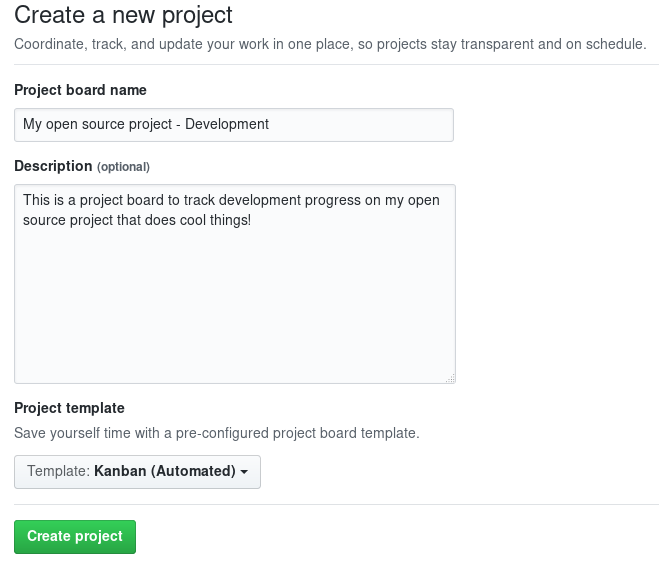

- #GITHUB TASKBOARD HOW TO#
- #GITHUB TASKBOARD SOFTWARE#
- #GITHUB TASKBOARD CODE#
- #GITHUB TASKBOARD FREE#
Markdown is a language mode for styling text, placing images and links. To create, describe, and manage these components, issues have the following characteristics: Markdown epics, user stories, and tasks are important elements within this methodology.
The latter is very useful if we want to manage our project with the Scrum methodology. Issues can be used to publicize a bug in the program, to describe upcoming features, or to describe user stories or tasks. In essence, issues are text entries that developers or anyone can create.

#GITHUB TASKBOARD CODE#
The code of each project is stored in Repositories and offers us a variety of tools that will help us both in the development and the administration of the project. GitHub calls itself a code storage platform for version control that facilitates collaboration in code development.
#GITHUB TASKBOARD HOW TO#
I will use the Scrum methodology as an example and we will see a short tutorial on how to use these tools. In this article I will show the basics that GitHub offers to manage a project. If we manage development within GitHub, developers will only have to use one tool and will be able to connect the code with the tasks assigned to them in the project. Also, it is inconvenient for the developer to use one more tool/program outside of GitHub, and, likely, it does not have integration with GitHub or it is paid. What’s the difference? Internet tools offer no integration with the code. On the Internet there are also several tools with the same purpose. GitHub offers tools that allow us to manage our projects following the guidelines of agile methodologies. Most companies and startups use agile methodologies to carry out the development of their projects. Also, companies can save and version their code in private repositories and use the different tools that GitHub offers to improve their development processes. Open-source projects can be saved and have their code shown in public repositories so that any developer can contribute by generating new functionalities or fixing bugs.
#GITHUB TASKBOARD FREE#
We no longer use Redmine, but we hope this article is still helpful for those of you that do! If you’re interested in more of our approach to tooling, be sure to take a look at Helperbot, our free Slack application to assist with estimation, rating, and other Scrum rituals.Both git and GitHub have become indispensable tools in the lives of developers. Interested in using Task Board? A future blog post will detail how it was built and how you can use it for yourself, or if you run Redmine and understand how plugins work, you can grab it from Github now. Only then will a plugin like Task Board allow you to elevate your work level to a place where you are consistently delivering high quality work. Complete buy-in is needed from all developers and the project managers in order for this to truly succeed. It takes real dedication from the entire team to Kanban’s underlying concepts. Some fair warning: just having a utility like Task Board isn’t enough to say you are using Kanban. “Completed Work” has been finished and approved by the client for the project.“Feedback” is a place for items which need further information from clients or those items which are ready for QA/Acceptance.“In Progress Work” are the items which are actively being worked on in development.“Pending Work” is the prioritized work as determined by the client (for maintenance projects) or the developer and the client together (for development projects).“New Work” is the entire backlog for the project – all the items which have yet to be prioritized.

Here is a quick rundown on the columns we typically use on all projects: The limit on each column depends on the arrangement with the client for maintenance projects or our three items per developer rule for development projects. Our basic column setup is: New Work > Pending Work > In Progress Work > Feedback > Completed Work. Task Board can be configured by client/project in Redmine to have as many or as few columns as are required, and each column can have a Work in Progress (WIP) limit placed on it. This plugin, named Task Board, looks a lot like Trello on the surface (with a drag & drop interface and all!), but the real power comes in how it is conceptually used. (For more on exactly what Kanban is and how we use it at Alley, check out this post.) However, we quickly realized that Kanban at Alley was going to be fairly complicated to implement so we built a plugin for Redmine, our project management system.
#GITHUB TASKBOARD SOFTWARE#
At Alley, we use Kanban to manage software development.


 0 kommentar(er)
0 kommentar(er)
